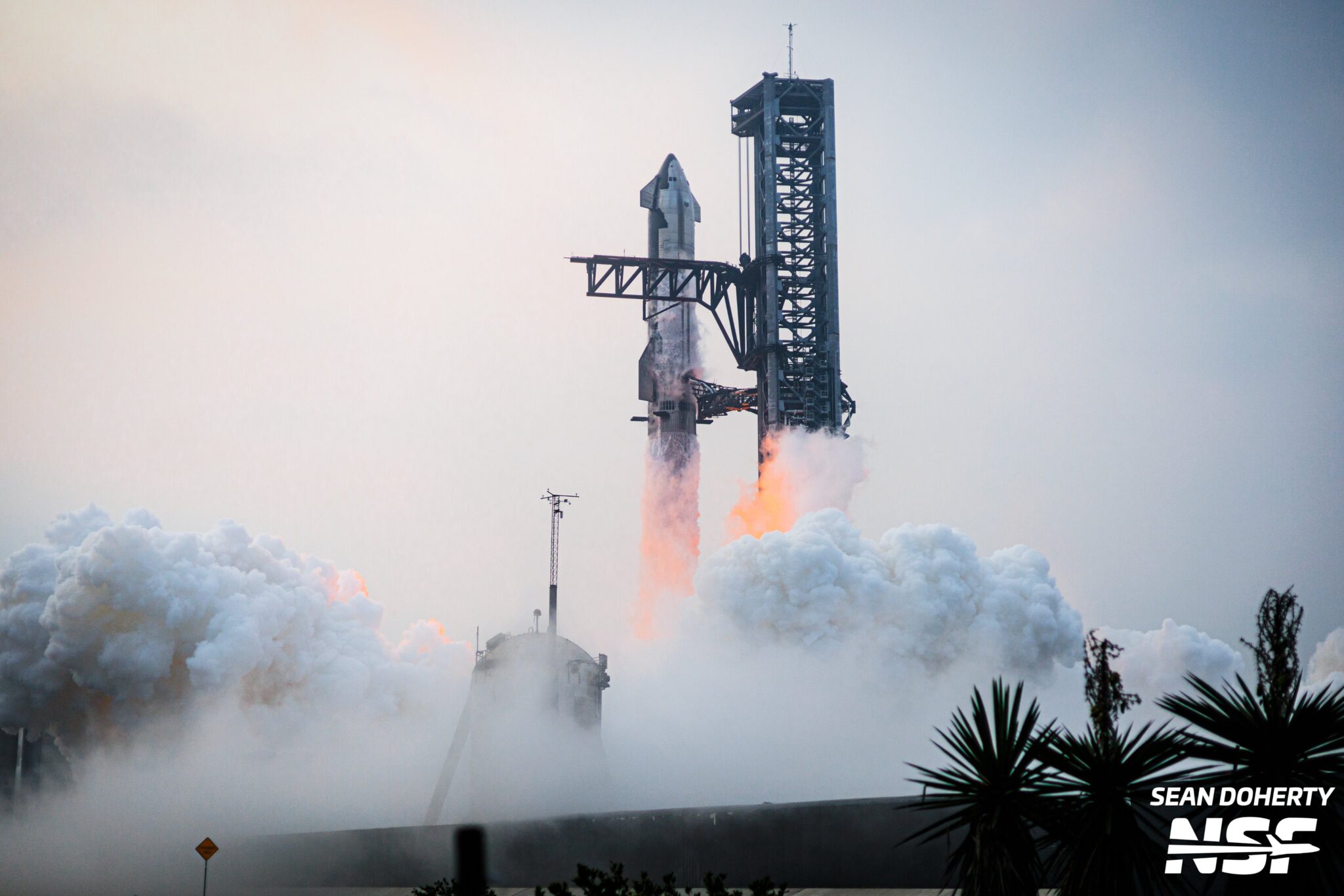SpaceX has carried out the fourth test of the new Starship spacecraft. It ended with success. It managed to solve almost all the tasks set.
Successful splashdown of Super Heavy
Starship was launched from SpaceX’s Starbase in Texas. During the launch, the Super Heavy booster shut down one of the 33 Raptor engines. But this had no noticeable impact on the flight.

The Super Heavy booster successfully operated its section and then separated from the spacecraft. Then it dropped the 9-ton transition compartment, performed a return maneuver and splashed down in the Gulf of Mexico. However, during the final braking maneuver, the booster again shut down one of the engines, but this, however, was not a critical problem. Super Heavy performed a soft splashdown, which was a great success for SpaceX. In previous attempts, the booster either exploded or the company lost contact with it.
Super Heavy has splashed down in the Gulf of Mexico pic.twitter.com/hIY3Gkq57k
— SpaceX (@SpaceX) June 6, 2024
As for Starship, it was put on a suborbital trajectory. The spacecraft flew over the Atlantic Ocean and Africa before entering the atmosphere at a speed of 7.4 kilometers per second.
Starship against Earth’s atmosphere
This stage was key to the mission. Specialists wanted to know how the spacecraft would behave under re-entry conditions and how effective the thermal protection would be. Before the launch, they even removed a couple of heat shield tiles from Starship, and damaged another one. This was done intentionally to get maximum data.
Peaking heating. Starship on a good entry trajectory pic.twitter.com/H0Gv6hyvt2
— SpaceX (@SpaceX) June 6, 2024
Unlike the previous flight, when the spacecraft lost its orientation, this time Starship entered the atmosphere at the correct angle. All along, SpaceX continued to broadcast, allowing us to see a cloud of plasma forming around the spacecraft. At its peak, the spacecraft’s 18,000-tile heat shield heated up to a temperature of 1,400 degrees Celsius.
At some point, at least one of the Starship’s flaps began to break apart. Its debris damaged the camera, making it very difficult to further monitor the descent.
But despite all the damage, Starship managed to maintain controllability. The spacecraft successfully passed through the atmosphere, performed a rollover maneuver and activated its engines, spinning down into the waters of the Indian Ocean.
Although experts remain to analyze the huge amount of information obtained during the flight, we can already say that this is a major success for SpaceX. The company managed to successfully complete two key tasks that failed during the last test. Although the Starship was damaged during re-entry, the spacecraft did not crash. All of this means that we can clearly expect SpaceX to set even more ambitious goals during the next test. After all, its primary goal is to successfully return to Earth and reuse Starship and Super Heavy.


